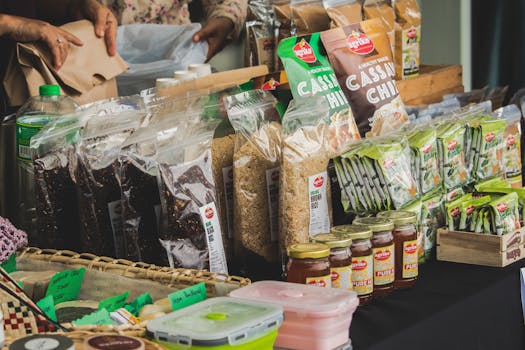
**
The rollercoaster ride of meme stocks is far from over. Recent surges in prices of companies like AMC Entertainment and GameStop, fueled largely by retail investor enthusiasm, signal a potential return to the volatile trading patterns that defined much of 2021. This resurgence underlines a broader concern: a frothy market propped up, at least in part, by the continued influence of individual investors leveraging social media and online trading platforms. This renewed activity raises questions about market stability, regulatory oversight, and the long-term implications of this increasingly democratized – yet volatile – investment landscape.
The Meme Stock Revival: A Deep Dive into Recent Price Swings
The past few weeks have witnessed a significant upswing in the prices of several meme stocks, defying predictions of their demise. This comeback isn't driven by fundamental improvements in the underlying businesses, but rather by a renewed wave of online hype and coordinated buying activity, largely orchestrated through platforms like Reddit's WallStreetBets. This coordinated buying, often referred to as a "short squeeze," targets companies heavily shorted by institutional investors. When retail investors collectively buy, the price rises, forcing short-sellers to buy back shares to limit their losses, further driving up the price.
Understanding the Mechanics of a Short Squeeze
A short squeeze is a powerful force in the market, capable of generating dramatic price increases in a short period. It works as follows:
- Short Selling: Investors borrow shares of a company, expecting the price to fall. They then sell these borrowed shares, hoping to buy them back at a lower price later and profit from the difference.
- Increased Demand: When a stock's price starts rising unexpectedly, short-sellers face mounting pressure.
- Forced Buying: To limit losses, short-sellers are forced to buy back the shares they borrowed, increasing demand and further driving up the price.
- Short Squeeze Intensifies: This cycle of forced buying intensifies the price increase, potentially leading to dramatic gains for those who bought earlier.
However, this mechanism is also inherently risky, leading to significant volatility and potential losses for those who enter the market too late or fail to exit before the price inevitably corrects.
Beyond the Hype: Analyzing the Underlying Factors
While social media hype and coordinated buying undoubtedly play a significant role, other factors contribute to the meme stock resurgence:
- Low Interest Rates: Persistently low interest rates incentivize investors to seek higher returns in riskier assets.
- Increased Retail Participation: The accessibility of online brokerage accounts has dramatically increased retail investor participation in the market.
- Search for "Yield" in a Low-Yield Environment: Traditional income-generating assets offer historically low returns, pushing investors towards potentially higher-yielding, albeit riskier, alternatives like meme stocks.
- FOMO (Fear Of Missing Out): The social nature of meme stock investing exacerbates the fear of missing out, prompting further buying and amplifying the price swings.
The Regulatory Landscape and the Future of Meme Stocks
The recent meme stock activity has reignited the debate about regulatory oversight and investor protection. Concerns exist about the potential for market manipulation and the impact of social media hype on individual investor decision-making. Regulators are grappling with the challenge of balancing investor freedom with the need to maintain market stability and prevent abusive trading practices.
Potential Regulatory Responses
Several potential regulatory responses are being considered:
- Increased Transparency: Greater transparency in short-selling data could provide a clearer picture of the market and potentially mitigate the impact of short squeezes.
- Enhanced Investor Education: Educating individual investors about the risks associated with meme stocks and other volatile assets is crucial.
- Social Media Monitoring: Monitoring social media platforms for coordinated market manipulation attempts is a complex but potentially valuable tool.
- Strengthening Existing Regulations: Strengthening existing regulations surrounding market manipulation and insider trading is another area of focus.
However, implementing effective regulation in the face of rapidly evolving market dynamics is challenging. Striking a balance between protecting investors and fostering innovation is a delicate task that demands careful consideration.
The Broader Implications: A Frothy Market and Future Uncertainty
The renewed interest in meme stocks highlights a broader issue: a potentially frothy market environment fueled, at least in part, by the unprecedented levels of retail investor participation. While the long-term implications remain uncertain, several scenarios are possible.
- Sustained Volatility: The market could continue to experience heightened volatility as retail investors remain active and engaged in speculative trading.
- Market Correction: A significant market correction could occur if investor sentiment shifts or if regulatory measures dampen speculative activity.
- Shift in Investor Behavior: Retail investors might gradually shift their focus towards more traditional investment strategies as they gain experience and understanding.
The future of meme stocks and the broader market is intricately linked to investor behavior, regulatory action, and macroeconomic factors. The current resurgence serves as a powerful reminder of the dynamic and sometimes unpredictable nature of the market, emphasizing the need for careful consideration, informed decision-making, and a keen awareness of the risks involved. The ongoing saga of meme stocks is likely to continue shaping the investment landscape for years to come, demanding continuous monitoring and adaptation from investors, regulators, and market participants alike.



















